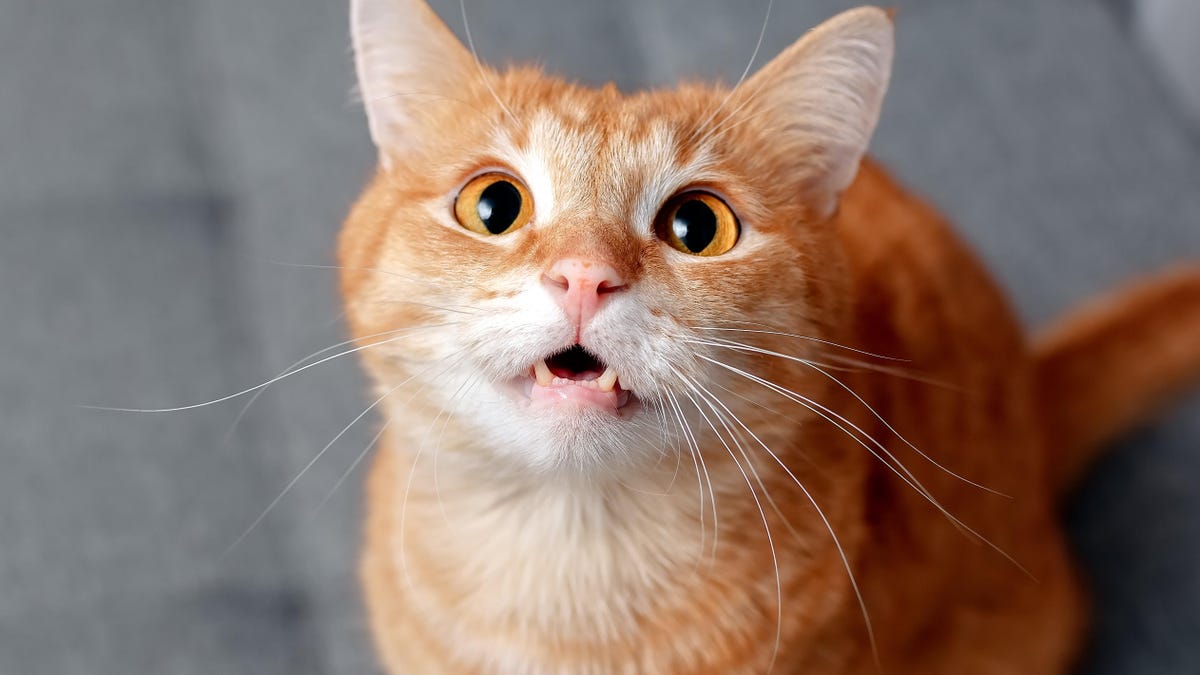
Scientists in France might have just found the most effective way to catcall an unfamiliar cat. The team discovered that cats living at a cat cafe responded most quickly to a human stranger when the stranger used both vocal and visual cues to get their attention. The cats also appeared to be more stressed out when the human ignored them completely.
The study was conducted by researchers at Paris Nanterre University’s Laboratory of Compared Ethology and Cognition, led by Charlotte de Mouzon. De Mouzon has been studying the ins-and-outs of cat-human interaction for several years now. Last October, for instance, she and her team published a paper suggesting that pet cats can readily distinguish their owner’s voice from that of a stranger’s and can also often tell when their owner is directly speaking to them.
Advertisement
Much of de Mouzon’s research has involved isolating and then studying a particular aspect of communication between cats and humans, such as vocal cues. While this specificity might make it easier to test a hypothesis, it’s not really how communicating tends to work between any two animals. We use everything from our voices to our facial expressions to our hands to get a point across to another human, and the same is true for cat-human conversations.
For this latest research, published Thursday in the journal Animals, she wanted to get a better sense of how cats respond to our different modes of communication, both alone and when interwoven with each other.
Advertisement
“When we communicate with them, what is more important to them? Is it the visual cues or the vocal cues? That was the starting question of our research,” de Mouzon told Gizmodo.
They recruited help from 12 cats living at a cat cafe. The experimenter (de Mouzon herself) first got the cats used to her presence. Then she put them through different scenarios. The cats would enter a room and then de Mouzon interacted with them in one of four ways: She called out to them but made no gestures toward them otherwise, like extending out her hand; she gestured toward them but didn’t vocalize; she both vocalized and gestured toward them; and, in the fourth, control condition, she did neither.
Advertisement
The cats approached de Mouzon the fastest when she used both vocal and visual cues to catcall them, compared to the control condition—a finding that wasn’t too unexpected. But the team was surprised by the fact that the cats responded quicker to the visual cues alone than they did to the vocal cues. De Mouzon points out that owners routinely love to adopt a “cat talk voice” with their pets, so they figured that cafe cats would respond better to vocalizations. They now theorize that this preference might be different for cats interacting with human strangers than it would be for their owners.
“It shows that it’s not the same thing. It’s not the same for a cat to communicate with their owner as it is to communicate with an unfamiliar human,” she said. “It’s nice to have the results that you expect. But sometimes it’s also nice to have results that you don’t expect, because it makes you think and form new hypotheses that try to get at what’s really going on.”
Advertisement
Another intriguing finding was that the cats tended to wag their tails more often in the vocal cue scenario and the most in the control scenario, when they were being fully ignored. Dogs might wag their tails out of happiness, but it’s usually the opposite for cats—an indicator of stress or discomfort.
The tail wagging is more evidence that cats are more comfortable with visual or combined cues from human strangers, de Mouzon says. And they might be especially stressed when ignored because of the incongruity of the situation. She notes that the cats were placed in a room where they interacted with a human who previously played with them but was now completely shutting them out. Much like humans, cats might also feel discomfort when they can’t easily read the intentions of someone else in a room.
Advertisement
De Mouzon plans to keep diving deep into the nuances of cat-human conversation. She and others are currently working on a study of how owners respond to visual and vocal cues from their cats (notably, cats only really meow to humans and not to each other). She also hopes to replicate this study with house cats to confirm her suspicions about their different communication styles.
A separate key lesson learned from this research is that French people seem to have their own unique way of getting cats to notice them. The paper details de Mouzon using “a sort of ‘pff pff’ sound” as her vocal cue, which is apparently widely used by people in France to call cats. When she demonstrated the gesture over Zoom, it sounded like a “kissy” sound, at least to this reporter’s ear. And importantly, it was subtly distinct from the “pspsps” sound that’s common among English-speakers trying to attract a cat.
Advertisement
The exact origins of these catcalls may never be clear. But either way, it’s another sign that the relationship and bond between cats and humans is just as complex as any other.
Services Marketplace – Listings, Bookings & Reviews